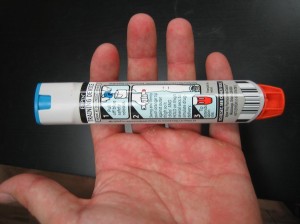Most cases of hives or urticaria are not serious and often vanish after some time without requiring any form of treatment. The symptoms include red-colored, itchy bumps and welts on the skin. In most cases, angioedema is a linked condition that manifests once the swelling reaches deep into the skin usually around the mouth and eyes. Remember that hives can be life-threatening if the swelling develops in the tongue or throat which causes the airway passages to become clogged.
Medications
The commonly used remedy for hives on the skin are antihistamines that work by blocking the histamine which is the chemical that produces the bumps and welts on the skin. There are also over-the-counter antihistamines readily available in drug stores or pharmacies such as diphenhydramine as well as loratidine.
The prescription antihistamines are used in severe cases of hives outbreak. In most cases, the doctor will prescribe oral corticosteroids to minimize the swelling generated by hives and angioedema. In case the breathing becomes labored, the individual must be taken to the emergency room so that a shot of adrenaline can be given to counteract the effect of hives. Those who regularly experience this skin condition should always bring along an epinephrine injection in case of emergencies.

Cool water
Even though some individuals wait for hives to run their course, the application of a cool compress can help reduce the itchiness and swelling. You can use a clean, cool washcloth that should be applied over the affected area to soothe the itchiness.
Bandages can be used to secure the cool compress in place. You can also encourage the individual to soak in a bath with cool water. In most cases, colloidal oatmeal or even baking soda can be added to the water to promote the healing process.
Avoidance
Always bear in mind that hives are typically triggered by an allergic reaction. Identification of the substances that trigger an outbreak can help reduce future symptoms.
Some of the common causes of hives include certain foods, animal dander and pollen which usually generate other indicative symptoms aside from the red-colored bumps such as sneezing and runny nose. Bee stings, latex and medications can lead to the development of hives and angioedema.
Vitamins
Various vitamins can prevent and even manage hives. Vitamin C must be taken on a daily basis to minimize the level of histamine in the body. As for chronic cases of hives, they are relieved with weekly injections of vitamin B12.
In addition, a plant-based flavonoid called as quercetin can help minimize an allergic breakout. The individual must take between 200-400 mg before meals at least 3 times in a day or as directed by the doctor.
